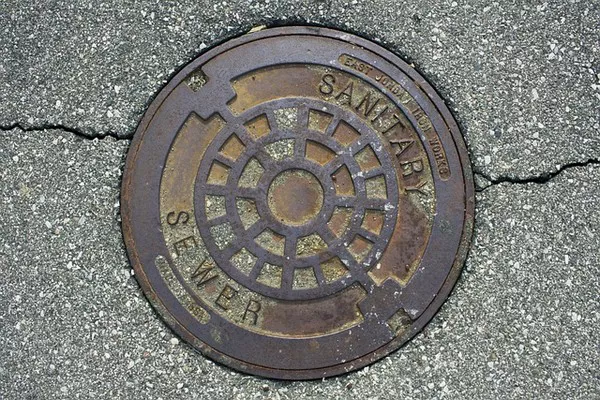As the world’s population continues to grow, the challenges of proper sewage treatment and water management become increasingly paramount. Traditional sewage treatment methods often rely on energy-intensive processes and can contribute to environmental degradation. In this context, natural methods of sewage treatment offer a promising solution that aligns with the principles of sustainability and eco-friendliness.
The Need for Sustainable Sewage Treatment
Effective sewage treatment is essential to prevent waterborne diseases, protect aquatic ecosystems, and ensure a safe and sustainable water supply. Traditional sewage treatment involves processes such as primary sedimentation, biological treatment, and chemical disinfection. While these methods have proven effective, they often require significant energy inputs, chemical additives, and infrastructure, which can be both resource-intensive and environmentally harmful.
Natural sewage treatment methods, on the other hand, capitalize on the inherent processes present in nature to break down and purify wastewater. These methods offer several advantages, including lower energy consumption, reduced chemical usage, and minimal impact on the surrounding environment.
Constructed Wetlands
One of the most well-known natural sewage treatment methods is the use of constructed wetlands. These are engineered systems that mimic natural wetland ecosystems to treat wastewater. Constructed wetlands consist of a shallow basin filled with aquatic plants, soil, and gravel. As wastewater flows through the wetland, physical, biological, and chemical processes work together to remove pollutants.
Aquatic plants play a vital role in constructed wetlands by promoting oxygen exchange and providing a substrate for beneficial microorganisms. These microorganisms break down organic matter and help to remove nutrients like nitrogen and phosphorus. Additionally, the wetland’s porous substrate traps suspended solids, allowing them to settle and be naturally decomposed.
Constructed wetlands are versatile and can be designed to treat various types of wastewater, including domestic sewage and agricultural runoff. They offer a sustainable solution for small communities, rural areas, and even industrial facilities, helping to achieve effective sewage treatment without a heavy reliance on energy or chemicals.
Soil Infiltration and Recharge
Soil infiltration and recharge, also known as land application, involve the controlled application of wastewater to the soil for treatment. This method is particularly effective for treating partially treated or pre-treated sewage effluent. The soil acts as a natural filter and treatment medium, removing contaminants and pathogens as the wastewater percolates through its layers.
In this process, organic matter is broken down by soil microbes, and nutrients are absorbed by plants or immobilized within the soil. Pathogens are also naturally deactivated as they pass through the soil due to physical filtration, predation by soil organisms, and exposure to environmental conditions.
Proper site selection and soil characterization are critical for the success of soil infiltration and recharge systems. Factors such as soil composition, permeability, and hydraulic conductivity play a significant role in determining the system’s efficiency. When well-designed and managed, this method can provide effective treatment while also recharging groundwater reserves.
Aquatic Systems: Ponds and Lagoons
Natural aquatic systems, such as stabilization ponds and lagoons, offer an economical and eco-friendly way to treat sewage. Stabilization ponds are shallow, man-made bodies of water that rely on natural processes to treat wastewater. These ponds are typically divided into several cells, each serving a specific treatment function.
Sunlight promotes the growth of algae in the ponds, which helps to oxygenate the water and facilitate the breakdown of organic matter. The interaction between sunlight, algae, and bacteria creates a natural ecosystem that results in the removal of contaminants. Over time, solids settle to the bottom of the pond, where they undergo decomposition in an oxygen-limited environment.
Stabilization ponds are widely used in regions with favorable climate conditions, as they rely on sunlight and temperature for effective treatment. They are particularly suited for smaller communities and rural areas where the land is available for pond construction.
Green Roofs and Living Walls
In urban environments, where space is limited and the impervious surface area is high, innovative natural sewage treatment methods like green roofs and living walls are gaining attention. Green roofs involve covering building rooftops with vegetation, creating a mini-ecosystem that can capture and treat rainwater and greywater.
Living walls, also known as vertical gardens, are designed to be installed on exterior building walls. These systems utilize plants to capture and treat wastewater through a combination of filtration, biological processes, and evapotranspiration. Both green roofs and living walls contribute to stormwater management by reducing runoff and enhancing the quality of water that reaches the ground.
Conclusion
As the global demand for water resources continues to rise, finding sustainable and environmentally friendly solutions for sewage treatment is of utmost importance. Natural methods of sewage treatment offer a viable alternative to conventional systems, showcasing the potential of harnessing nature’s processes to achieve efficient and effective water purification. Constructed wetlands, soil infiltration and recharge, aquatic systems like ponds and lagoons, and innovative urban approaches such as green roofs and living walls all contribute to a more holistic and ecologically balanced approach to sewage treatment. By adopting these methods, communities can move closer to achieving their goals of water conservation, pollution reduction, and overall environmental sustainability.

